#sewell 1910s
Explore tagged Tumblr posts
Text

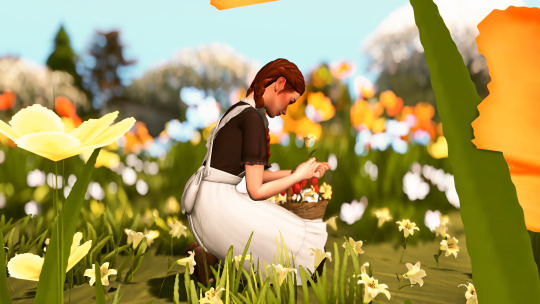
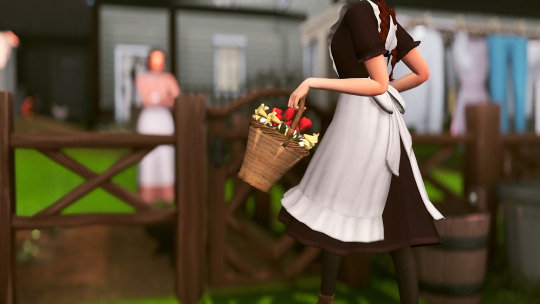
Spring 1916
~an excerpt from Elsie Sewell's private diary~
Spring has arrived! The calendar has been saying it had been here for weeks, but today it really and truly made its presence known. The east field is awash with flowers and I simply had to stop and pick a bouquet, they had the sweetest scent and the most delicate yellow petals. Mamma was rather irritated that it made me a bit late coming home, but I can't very much see why. I was back with plenty of time to prepare supper (she had an Aide Society meeting) and the house smelled ever so sweet as I did. No one complained about my victual offerings either.
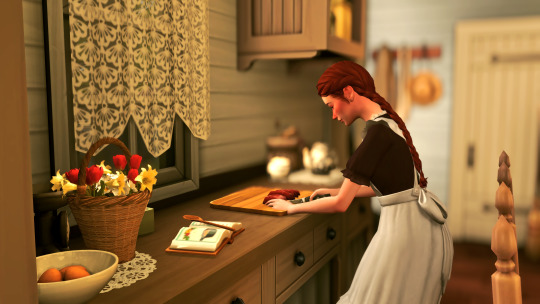
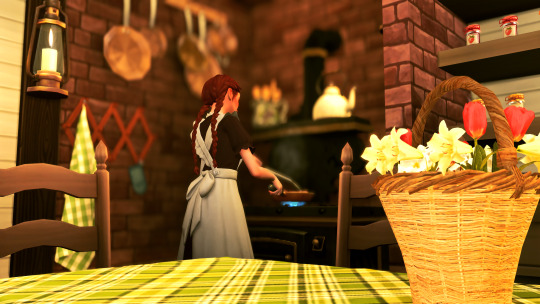
I am quite pleased to be done with the schoolhouse; sums and grammar were always ever so boring and pointless. It is ever so much better to spend the day with work that actually has to be done, rather than made up to torture us. I enjoy most housework, cooking and sewing in particular, but laundry... There's something about that specific task I have not yet resigned myself too.
I think we all have that particular chore that we dislike more than the others, though none of the adults will admit so to my face. Laundry is a necessary evil though, or we should all go around naked, as Adam and Eve did in the garden of Eden, and the climate her could never allow such an indulgence, so laundry we must do.
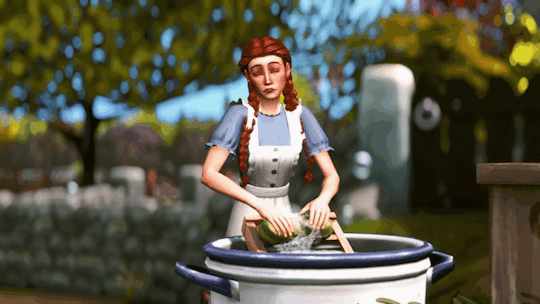
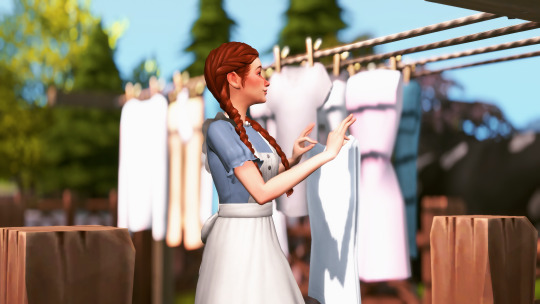
It does feel good to be helping around the house more and take some of the burden off Mamma; I can't imagine how she did all this work on her own for years, it's quite a lot between the two of us. Despite my continued propensity to "dawdle" as Mamma puts it, she still sends me on all the errands, I think she likes having the house to herself just as much I like the walk into town. Sometimes Lydia accompanies me if her mother also needs something fetched.
The general store is the best store in town, it's filled floor to ceiling with everything you could ever need. Dottie's always mighty pleased to see us and if she's busy Mr. and Mrs. Greenfield are always so sweet to me. Sometimes Mr. Greenfield slips me penny candy in with my orders with a little wink.
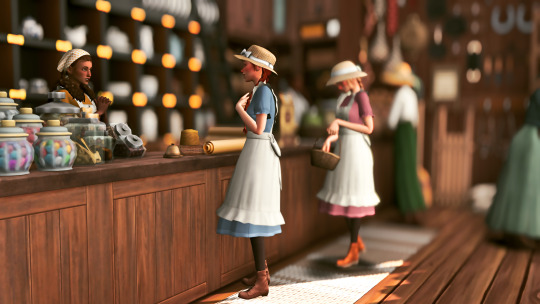
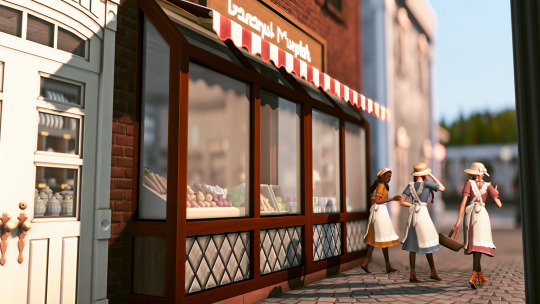
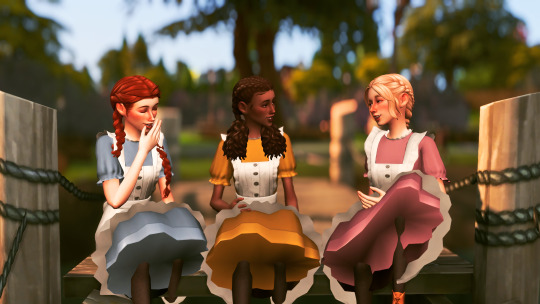

Dottie, Lydia and I don't see each other as much as when we were in school, but now that we're older when we're finished with chores and housework we have so much more freedom to go on walks or sit down by the inlet. The sun hits the old dock down there in the afternoon and it's so pleasant, especially if there's a breeze coming off the water.
We chat about anything and everything; Dottie always has all the news of the town since she talks to just about everyone at the general store. Mamma says it's wrong to gossip, but she always says that after I've given her all the news. Lydia is such a hoot, she has the strongest opinions on everything and everyone. Just the other day she was informing (lecturing one might say) us on the proper etiquette for accepting a proposal; according to Mrs. Parr proper young ladies should never accept their first proposal, they must refuse and wait for the man to ask again, that's how she'll know he's serious and will make a good husband. Apparently she turned Mr. Parr down thrice. Dottie and I both thought that was completely silly. Mamma said yes to her first proposal and she seems quite content with her lot.
~~~~~~~~~~~~~~~~~~
next / previous / first
#ts4#sims 4#sims 4 decades challenge#decades challenge#ts4 story#sims 4 story#ts4 historical#sims 4 historical#simblr#ts4 legacy#sims 4 legacy#elizabeth sewell#sewell legacy#sewell 1910s
193 notes
·
View notes
Text
OTTERSHAW PARK
The mansion






Hi guys!!
I'm sharing Ottershaw Park. This is the 18th building for my English Collection.
I decorated most of the house ground floor, for reference.
The interiors:











History of the house: In 1784 Thomas Sewell died and ownership of Ottershaw Park passed to his son, Thomas Bailey Heath Sewell, Lieutenant Colonel in the Surrey Fencible Cavalry. He sold it in 1796 to Edmund Boehm who improved the interior of the house and enlarged the estate by buying tracts of wasteland and allotments.
In about 1805 Boehm built, to the design of the eminent architect James Wyatt, two Grecian-style lodges at the new entrance to the estate from where a coach road ran to the mansion. The same architect may also have designed for Boehm the Gothic Chapel which originally served as a kitchen, bake house, dairy and pantry but was demolished in 1962.
Ottershaw Park was bought in 1819 by Major General Sir George Wood, a Lieutenant General in the Bengal Army. At this time the estate was largely self-supporting with stables, smithy, brew house, bake house, laundry, dairy, slaughter houses, ice house and two farms.
Sir George died in 1824 and the estate passed to his son, also named George, who in 1841 sold the property to Richard Crawshay who built a new bailiff’s house, farm buildings and brew house.
On Crawshay’s death in 1859 the estate was bought by Sir Thomas Edward Colebrooke MP, who made a number of alterations to the mansion. He also gave the money and land for the building of Christchurch and the first village school.
The estate was later sold to Lawrence James Baker, a stockbroker and MP who sold it in 1910 to the millionaire, Friedrich Gustav Jonathan Eckstein. Eckstein demolished the old mansion and replaced it with the present building designed by Niven & Wigglesworth which is more magnificent and much larger.
During World War I Eckstein made the building available to the British Red Cross as an Auxiliary Home Hospital but soon after the war sold it to Miss Susan Dora Cecilia Schintz, the daughter of a Swiss nitrates millionaire. Miss Schintz lost most of her sizeable inheritance through gifts to charity and bad investments and finally had to sell the estate. Much of it was acquired by the Ottershaw Park Investment Company (OPIC) which planned to develop the rim of the estate for housing. In 1932 the mansion and central part of the park became Ottershaw College, a boarding school for boys which for a short time was very successful, but eventually became insolvent and finally closed at the outbreak of World War II.
During the war The Vacuum Oil Company leased the mansion as offices and laboratories. From 1940 much of the surrounding land was either ploughed for crops or grazed as part of the war effort and the woodland areas were used by the 19 Vehicle Reserve Depot (VRD) for storing vehicles.
The Vacuum Oil Company moved back to London at the end of 1947 and Surrey County Council established Ottershaw School which was opened in 1948. The school prospered until 1980 when it closed due to financial constraints.
In 1982 the developers DeltaHome converted the mansion and other buildings into the present residential estate.
Link: https://www.exploringsurreyspast.org.uk/themes/places/surrey/runnymede/ottershaw/ottershaw_park_estate/
The garden:








More info: https://www.exploringsurreyspast.org.uk/themes/places/surrey/runnymede/ottershaw/ottershaw_park_estate/
The floorplan:




This house fits a 64x64 lot, but I think you can make it a 50x40 if you lose part of the garden and the conservatories on each side.
Piano nobile furnished, the rest is up to your liking.
Hope you like it.
You will need the usual CC I use:
all Felixandre cc
all The Jim
SYB
Anachrosims
Regal Sims
King Falcon railing
The Golden Sanctuary
Cliffou
Dndr recolors
Harrie cc
Tuds
Lili's palace cc
Please enjoy, comment if you like the house and share pictures of your game!
Follow me on IG: https://www.instagram.com/sims4palaces/
@sims4palaces
DOWNLOAD (only members-free to download)
#sims 4 architecture#sims 4 build#sims4#sims 4 screenshots#sims4building#sims 4 historical#sims4play#sims4palace#ts4#ts4 download#ts4 simblr#ts4 gameplay#ts4 screenshots#the sims 4#the sims community#sims 4#the sims#sims 4 gameplay#simblr#simblog#british history#stately home#sims4statelyhome
73 notes
·
View notes
Text
How genealogy is used to track Black family histories

Our names are important to us. They tell us who we are and often, who we come from. So imagine suddenly discovering the last name you’ve always carried… might not actually be the name you should have.
Alex Neason began looking into her family’s history after discovering her great grandfather’s name was different from what she believed for her whole life. In her search to discover the story of that last name, she enlisted genealogist Nicka Sewell-Smith.
For Black Americans, genealogy can fill in the blanks left by the legacy of slavery and racism in the U.S. Services like the Freedmen’s Bureau and Slave Voyages provide free access to records and documents to help with that search. We talk about the power of genealogy in fostering knowledge and connection for Black Americans.
Source
If you click on the word “source,” it’ll take you to the article where you’ll see a LISTEN button. It’s a 30-minute audio that discusses the info provided in the article even further. Y’all know I’m big on getting people to trace their lineage. All that “we don’t know where we come from.” Who told you that? Everything in the US is in plain sight. Everything.
Discover your fam.
I assist others when they reach a roadblock, like getting past the “1870 wall.” But you can’t beat the feeling of you discovering them on your own. Unearthing your history, seeing photos, reading stories that were stored, and saying their names that haven’t been said for centuries. I’ve been tracing mine (scanning, logging) since my family reunion in 2005 through oral family history and obituaries (those are records), and since 2011 through databases of US archived records like ancestry.com (purchased by BlackStone) and familysearch.org (free database owned by the Latter-day Saints Church). There are others, but those are the main two I use for comparative results.
Archiving Centers, Census Records & Other Records
There are archiving centers in every state and DC that also keep records for those particular states and the federal capital. There’s a footnote on all records that tells you where they are housed. And please...Don’t just do a simple pedigree chart of your family tree. Get to know your great-aunts, great-uncles and cousins. It’s also helpful for seeing who lived around who (fam often lived next door to each other) and puts more of the pieces together of your complete family story. You can see the land and acres they owned or your fam today still owns, as well as if that land was stolen from them.
US census records go back to year 1790. Depending on when or if your ancestors were enslaved or free: you’ll find them attached to slave logs that have been made available online or kept in archiving centers (you go there), or or they’ll be listed on census records as free persons (1790-1710), free colored male/female (1820-1840), Black (1850-1920), Mulatto (1850-1890, 1910-1920) or Negro (1900, 1930-1950). “New” census documents are put on sites, like ancestry.com, every 10 years. As of 2023, you can only trace from 1950 to 1790. The 1960 census will be out in 2030. How to trace from 1950 to today, birth, death and residential records. So again, depending on the census year, you’ll notice your ancestors racial classification change throughout documents for obvious reasons.
Keep in mind that the the largest slave trade for the United States was the domestic slave trade. In house human trafficking and selling (in addition to property insurance of enslaved people and the selling of enslaved people as the building block of Wall Street’s stock exchange) is how US capitalism was built. So just because you know a lot of your people are from Tennessee, for example, it doesn't mean that’s where that line stayed. I’ve found my ancestors throughout 7 states (so far). Another example, people with Louisiana roots damn near always have ancestors who were trafficked from early Virginia. Going beyond year 1790, records were kept in Christian and Catholic churches and old family history books so most of those documents are scanned online and/or still kept in the churches. I’m talking books books.
If your ancestors walked the Trail of Tears, or were caught as prisoners of war or trafficked to Indian Nations to be enslaved, you’ll find an Oklahoma Indian Territory and Oklahoma Freedmen Rolls section on ancestry.com. You can discover more info on sites, like the Oklahoma Historical Society. (Every state has its own historical society for archived genealogical records.)
Here’s the National Archives.
Also for Oklahoma, you may also find your ancestors in Indian Census Rolls (1855-1940) as [insert tribe] Freedmen, depending if they weren’t rejected through the “blood quantum” Dawes Rolls for not being the new light to white status. You’ll see their application and the listed questions & answers with or without a big void stamp. And on the census, you’ll even see the letter I (pronounced like eye) changed to the letter B. This is also for those in Louisiana.
Freedmen’s Bureau & Bank Records
There were Freedmen’s Bureau records and Freedman’s Savings Bank records in other states. To see if your ancestors had their records in those systems, you can search by their name. The state and age will pop up with people having that name. It’ll give you a wealth of other info, like all of the kids and other fam if they were present or mentioned to the person who logged that info in. With the Freedmen Bank records, you can see how much money your ancestors put in there (that was later stolen from them by way of the United States government), which is still there today. It’s the biggest bank heist in US history (that they try to keep hush hush) with the equivalence of more than $80 million in today’s value stored in there today. Back then, it was valued almost close to $4 million. Stolen wealth met with bootstrap lectures.
Here’s a short video on that heist:
youtube
Today the bank is called the Freedman's Bank Building, located right on Pennsylvania Ave. Plain sight.
Trace your lineage.
There’s a lot more that I can list. But this is just the basics. Like I said before, it’s a more rewarding feeling when you discover your ancestors by yourself. You may reach roadblocks. Take a break. Try going the “Card Catalog” route on ancestry.com’s search engine. Don’t skip the small details.
SN: Slave Voyages isn’t a genealogical site, but rather a database for slave ship logs and the estimates of purchased Africans who became human cargo to be enslaved by country like USA, or by colonizers like Spain, Great Britain, etc.
#black americans#genealogy#lineage#ancestry#census records#freedmen's bureau#freedman's bureau#freedmen's bank#freedman's bank#american heist
212 notes
·
View notes
Text

Sewell Collins illustration ~ Une Nouvelle Constellation 1910
4 notes
·
View notes
Text

"These travelers would not have considered navigating by the lights below. They looked up at the lights overhead, at the stars arrayed across the black velvet dome of the sky. Those were the reliable guides. Cities, after all, might rise and fall, the the constellations overhead would persist, pointing the way for those who could read the sky."
- Kenn Kaufman,
A Season On The Wind
[Image: The New Constellation (1910) by American dramatist, producer and illustrator Sewell Thomas Collins, Jr. (1876-1934).]
Poetry, Tea and Me
#poetryteaandme
1 note
·
View note
Text

Naomi Sewell Richardson (September 24, 1892 - August 5, 1993) was born at Lincoln University, Pennsylvania to Perry W. Sewell and Florence Snowden Sewell, the youngest of three children. The Sewell family moved from Pennsylvania to Baltimore, to South Carolina, back to Baltimore, and ended up in Washingtonville, New York.
She was the first African American student to graduate from Washingtonville High School in 1910.
She attended Howard University in the fall of 1910. She was present at the meeting of the Alpha chapter of Alpha Kappa Alpha Sorority in the Fall of 1912. She and 21 other women made history through the founding of Delta Sigma Theta Sorority.
She taught elementary school in East St. Louis. She began her teaching career in 1914, following her graduation from Howard University, and was passionate about her role in the classroom. The school she taught at was segregated, yet she did not let that stop her or deter her dedication. After enduring the East St. Louis race riots in 1917, she moved to Princeton, New Jersey to teach. This school was segregated, and she became an advocate for the fair and equal treatment of African American teachers and faculty. She petitioned for the African American teachers to have their bathroom facilities, a goal that was successfully met.
On September 1, 1920, she married Clarence Richardson, a member of the Beta Chapter of Alpha Phi Alpha Fraternity. The couple moved to New York City. She began to substitute teaching and her husband was a post office employee. The Richardsons were married for 27 years and were the parents of Gloria Clark, their foster child. Upon her husband’s passing, she returned to her home in Washingtonville.
She was very active in her community and sorority. She was known for living quietly, she was admired for her work with extreme activism and civic service.
She was the last living founder of Delta Sigma Theta Sorority and continued to participate in the Mid-Hudson Valley. Her alumnae chapter organized 90th and 100th birthday celebrations for her. A book titled A Life of Quiet Dignity was written about her life and legacy. #africanhistory365 #africanexcellence #deltasigmatheta
1 note
·
View note
Text

#ProyeccionDeVida
🎬 “PEARL” X🪓
🔎 Género: Terror / Precuela / Años 1910-1919
⌛️ Duración: 101 minutos

✍️ Guión: Ti West y Mia Goth
🎼 Música: Tyler Bates y Tim Williams
📷 Fotografía: Eliot Rockett

🗯 Argumento: Atrapada en la granja aislada de su familia, Pearl debe atender a su padre enfermo bajo la amarga y dominante vigilancia de su devota madre, deseando una vida glamurosa como la que ha visto en las películas. Precuela de 'X' (2022) centrada en los orígenes del personaje de Pearl (Mia Goth)

👥 Reparto: Mia Goth (Pearl), David Corenswet (Projectionist), Alistair Sewell (Howard), Tandi Wright (Ruth), Matthew Sunderland (Pearl's Father), Emma Jenkins (Mitsy) y Amelia Reid (Margaret)
📢 Dirección: Ti West

© Productoras: A24 & Little Lamb
🌎 País: Estados Unidos
📅 Año: 2022


📽 Proyección:
📆 Jueves 04 de Julio
🕗 8:00pm.
🎦 Cine Caleta (calle Aurelio de Souza 225 - Barranco)
🚶♀️🚶♂️ Ingreso libre

🙂 A tener en cuenta: Prohibido el ingreso de bebidas y comidas. 🌳💚🌻🌛
1 note
·
View note
Text

Sewell Collins(1876-1934)
“A NEW CONSTELLATION” Life Magazine - October 27, 1910
1 note
·
View note
Photo
Sewell Collins(1876-1934)
Life Magazine - October 27, 1910
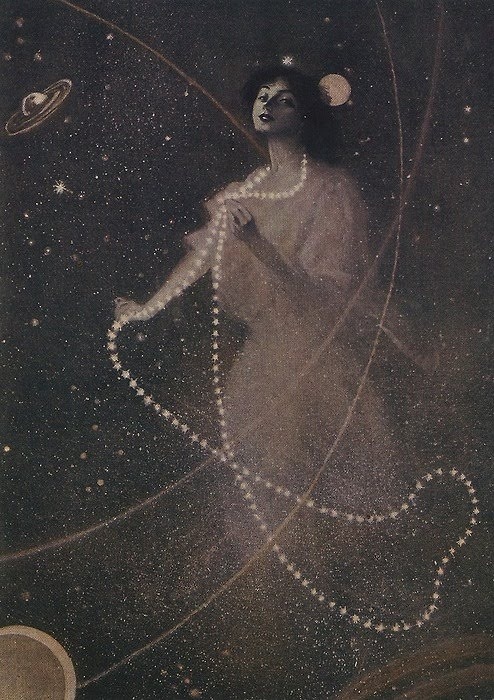
A New Constellation - Sewell Collins magazine cover, 1910
19K notes
·
View notes
Photo





Goodbye darling Evie Finch. The middle child of five girls, she made her mark on the world as a world-famous explorer, author, and archaeologist. She was brilliant, witty, and full of life, and will be dearly missed by her family, and her many fans around the world.
(Oof, this one hurts, folks. Evie might be my favourite sim I’ve ever played with, I’m gonna miss her.)
previous / next
#sims 4 decades challenge#ts4 decades challenge#finch legacy#1910s#gen 3#evie sewell#sims 4 historical#sims 4#ts4#simblr#evie finch
31 notes
·
View notes
Photo

'Implicitly, there should be something mysterious in every day.'
D. T. Suzuki ..
#D. T. Suzuki#something mysterious in every day#A New Constellation#Sewell Collins#1910#ripplefactor#rpf2
109 notes
·
View notes
Text
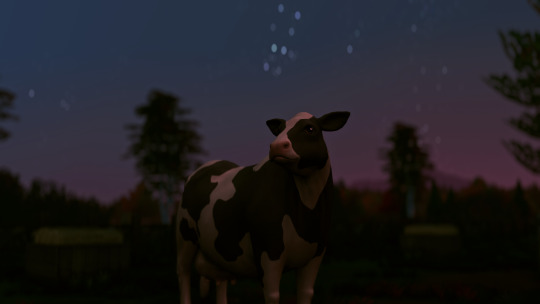
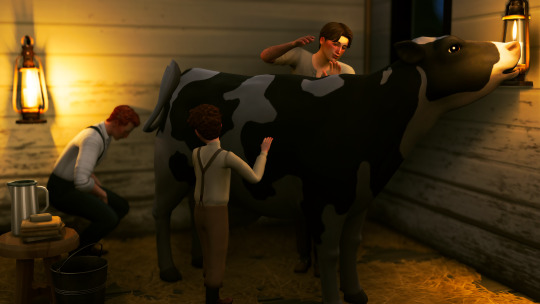
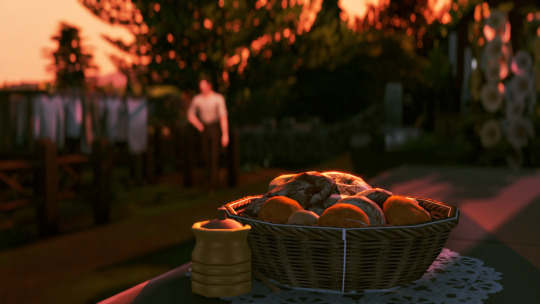
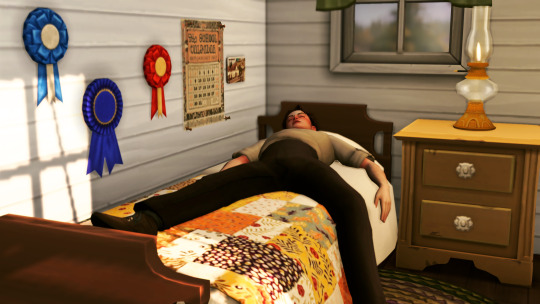
Spring 1916
It was spring in Brindleton, which meant the calving season was in full swing and sleep was a luxury no longer promised. The whole family felt the strain of it, Hamish and Will the most, but little Charlie came in a close third as Hamish insisted it was time he learned the ropes. Will had experienced almost ten full calving seasons. One morning — when he was unable to crawl to bed until well after the sun rose and breakfast had been served — he found himself desperately glad he wouldn't experience another.
With barely any time for sleep, Will hadn’t seen Clara in weeks. It wasn’t as if she had all the time in the world, either: her own family’s herd wasn’t much smaller than that of Sable Dairy. Despite each other's absence, it would seem neither was far from the other's thoughts. Will had found a small basket of still-warm rolls and a crock of honey sitting on the front stoop in the pearly near dawn that morning; Clara’s initials neatly embossed on the corner of the napkin they were wrapped in.
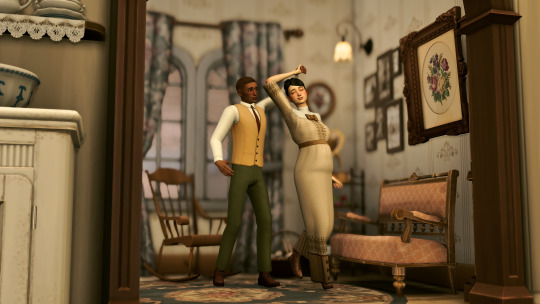
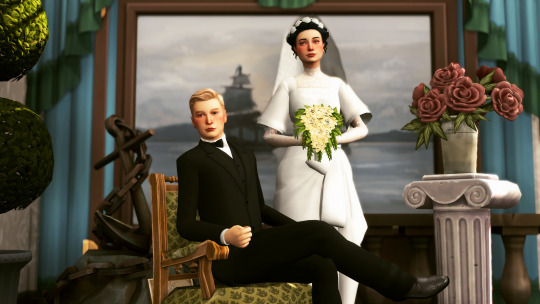
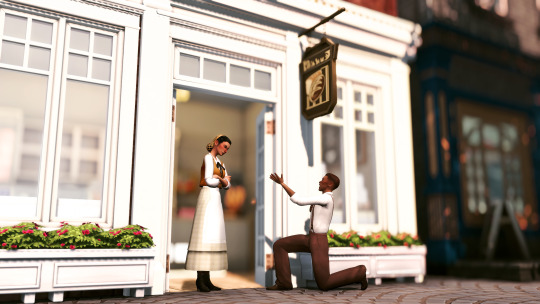
Will had been unable to stop thinking about Clara after Hamish’s well-intentioned question, and once he began thinking about Clara, he began thinking of his own friends' lives. He had uncomfortably realized that they were all married or engaged, leaving him the only bachelor. Albert and Posie were close to celebrating their second anniversary, and a baby was expected to mark the occurrence. Clive and his new wife had set up his medical practice in a small house overlooking the bay (after throwing the most extravagant wedding the town had seen in years). John — always the more wild of the group — had fallen head over heels for the new baker’s assistant and spent the past six months making an absolute fool of himself as he wooed her. The entire town had breathed a sigh of relief when she had accepted his proposal and the antics came to a halt.
Will had laughed along with everyone else at John (good-naturedly of course) but he had also harbored a secret jealousy of his friend. To find someone and fall so deeply in love so quickly that you would prize your love above all else seemed to Will like a true gift. His father’s stories of love at first sight had set him up with lofty expectations, and Will was still trying to readjust them to fall in line with everyone else's. Most folks knew they wouldn't immediately fall deeply in love; successful, well-matched marriages were built on a foundation of mutual respect and well-matched interests. Clara was a good match for Will.
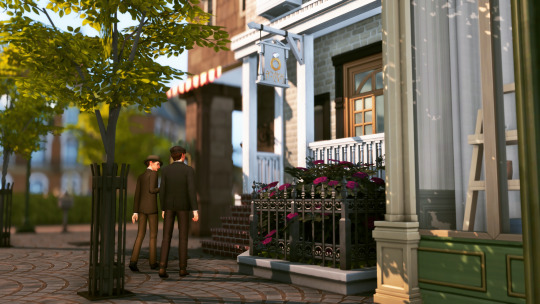
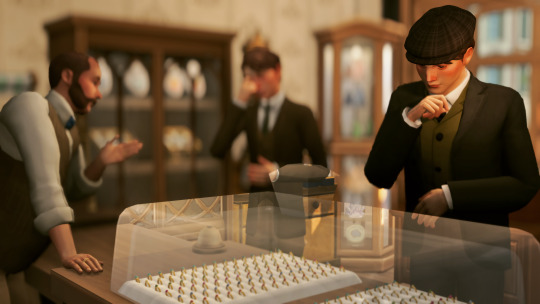

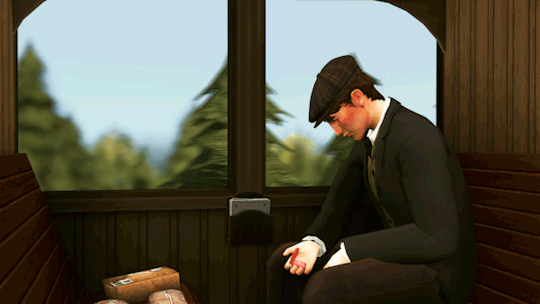

He had repeated that line over and over again, trying to imbue the truth of it into himself. He repeated it as he looked over the array of delicate rings nestled in velvet at the jeweler's in Britechester; he repeated it as the simple ring was wrapped by the portly jeweler and he parted with a sum greater than any he had ever spent; he repeated it as he sat on the train home, unable to keep from staring at the unassuming ring in its small red box. He had repeated it until it became his truth. He had the ring; her father's blessing had been secured the week before, now all that was left was asking Clara to be his wife.
~~~~~~~~~~~~~~~~~~
next / previous / first
#ts4 story#ts4 decades challenge#sims 4 decades challenge#decades challenge#ts4 historical#sims 4 historical#ts4 legacy#sims 4 legacy#sims 4 story#ts4#sims 4#sewell legacy#sewell 1910s#william sewell#frederick sewell#hamish sewell#charles sewell
171 notes
·
View notes
Text
MISS PATSY
1910

Miss Patsy is a farce in three acts by Sewell T. Collins, based on a Viennese play titled Lori Pollinger by Franz von Schoenthan.
The original production was produced by Henry W. Savage and staged by George F. Marion with Gertrude Quinlan in the title role. It had its world premiere at the Chicago Opera House on January 30, 1910.

Chicago was a natural location for Sewell’s play, as he was a popular Chicago cartoonist who specialized in theatrical illustration. His play lasted in the Windy City for two months before wending its way through the country headed to Broadway.

The play is set at a summer stock theatre in Annapolis, Maryland. Miss Patsy is the maid to the troupe’s leading lady. Gertrude Quinlan was an up-and-coming singer who producer H.W. Savage was eager to promote to star status.

The play stopped at the Criterion Theatre on the Boardwalk in Atlantic City on August 15, 1910. In 1926, the theatre changed its name to the Strand. It was open until the 1980s, when it was redeveloped as The Taj Mahal Casino Hotel, now known as The Hard Rock Casino-Hotel.

After leaving Atlantic City, the play headed to the Main Stem, being only the second attraction at the newly-opened Nazimova's 39th Street Theatre where it ran just three weeks. The Shuberts had named the venue for their client, actress Alla Nazimova. When she defected to Charles Frohman in 1911, the Shuberts removed her name and it was simply known as the 39th Street, which, due to the actresses foreign name, it was usually referred to anyway. In 1926, the Shuberts closed the theatre to focus on their more centrally located ventures. It was promptly razed and the new owner built an office building in its place.

Writing under the name “Norman”, this stinging gossip monger didn’t know how right he was about the name change of the theatre.
After Miss Patsy failed to satisfy the Rialto, she decamped to a variety of cities: Elmira NY, Harrisburg PA, Shamokin PA, Washington DC...

and Philadelphia PA, which was the end of the road for Miss Patsy. Quinlan, a skilled singer, was back on Broadway by February in her penultimate appearance.

In 1922, Quinlan reunited with Miss Patsy cast members Thomas Meighan and Larry Wheat for Back Home and Broke, her only film. It was made in Sag Harbor, Long Island. It is now considered lost.

A week after its New York City premiere, the movie opened in Atlantic City at the Virginia Theatre, on the Boardwalk at Virginia Avenue. Gertrude Quinlan had returned to Atlantic City (on celluloid), less than a block from where she had been launched to stardom as Miss Patsy.
#Miss Patsy#Gertrude Quinlan#Broadway Play#Farce#Sewell Collins#Lori Pollinger#1910#Atlantic City#Criterion Theatre#Strand Theatre#Boardwalk#Thomas Meighan#Broadway#Play#Stage#Theatre#Henry W. Savage
1 note
·
View note
Photo

Black Beauty The Autobiography of a Horse Anna Sewell London Jarrold & Sons [no date] c1910, 358th Thousand
#old#books#old books#old bookshop#michaelmoonsbookshop#bibliophile#vintage#1910#antique#antique books#antique bookshop#whitehaven#black beauty#anna sewell#autobiography#horses
489 notes
·
View notes
Text

Sewell Collins illustration ~ Une Nouvelle Constellation 1910
3 notes
·
View notes
Photo
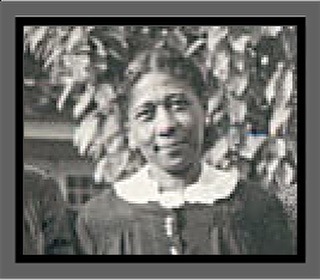
Naomi Sewell (September 24, 1892 - August 5, 1993) was born at Lincoln University, Pennsylvania to Perry W. Sewell and Florence Snowden Sewell, the youngest of three children. The Sewell family moved from Pennsylvania to Baltimore, to South Carolina, back to Baltimore, and finally ended up in Washingtonville, New York. She was the first African American student to graduate from Washingtonville high school in 1910. She attended Howard University in the fall of 1910. She was present at the meeting of Alpha chapter of Alpha Kappa Alpha Sorority in the Fall of 1912. She and 21 other women made history through the founding of Delta Sigma Theta Sorority. She taught elementary school in East St. Louis. She began her teaching career in 1914, following her graduation from Howard University, and was passionate about her role in the classroom. The school she taught at was segregated, yet she did not let that stop her or deter her dedication. After enduring the East St. Louis race riots in 1917, she moved to Princeton, New Jersey to teach. This school was segregated, and she became an advocate for the fair and equal treatment of African American teachers and faculty. She petitioned for the African American teachers to have their bathroom facilities, a goal that was successfully met. On September 1, 1920, she married Clarence Richardson, a member of the Beta Chapter of Alpha Phi Alpha Fraternity. The couple moved to New York City. She began to substitute teaching and her husband was a post office employee. The Richardsons were married for 27 years and were the parents of Gloria Clark, their foster child. Upon her husband's passing, she returned to her home in Washingtonville. She was very active in her community and sorority. She was known for living quietly, she was admired for her work with extreme activism and civic service. She was the last living founder of Delta Sigma Theta Sorority and continued to participate in the Mid-Hudson Valley. Her alumnae chapter organized 90th and 100th birthday celebrations for her. A book titled A Life of Quiet Dignity was written about her life and legacy. #africanhistory365 #africanexcellence #deltasigmatheta https://www.instagram.com/p/Ci459XtrKrc/?igshid=NGJjMDIxMWI=
2 notes
·
View notes